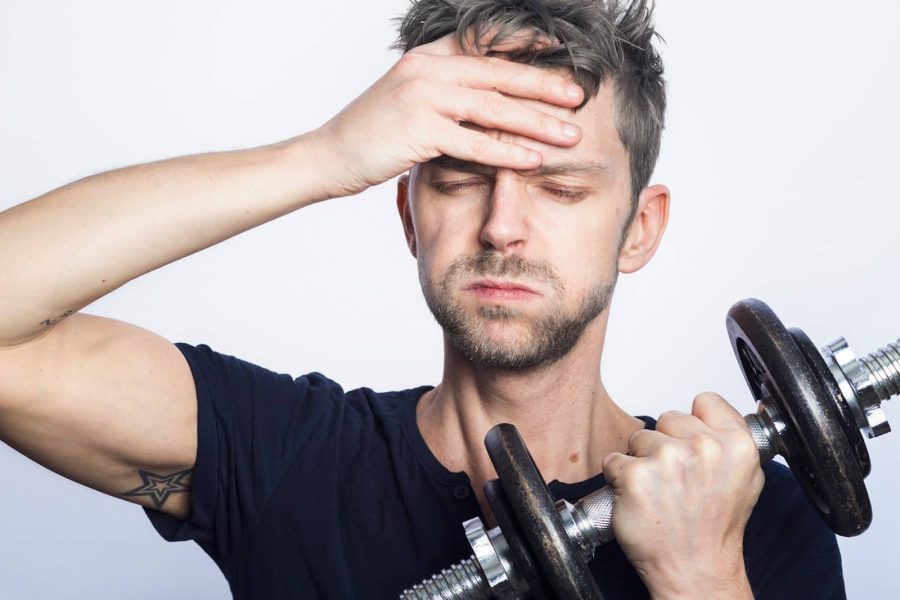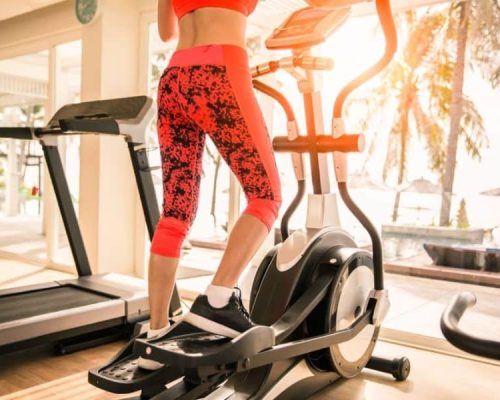Understanding Testosterone Levels
Why Testosterone Matters
Think of testosterone as your body’s behind-the-scenes superhero, working to keep everything running smoothly. This hormone is a mega player in a man’s body, helping with everything from making sperm to keeping those biceps in shape. It’s also what makes your voice go from squeaky to James Earl Jones-level deep, and why you might start seeing more hair on your face.
On top of all that, testosterone affects your mood, pep in your step, and your interest in those special date nights. As time goes by, nature might start to play its tricks causing testosterone levels to drop, leading to issues you might notice in the mirror or how you’re feeling inside. The American Urology Association (AUA) says that if you’re below 300 ng/dL, your testosterone levels are on the low side, though some docs say it’s a concern if you dip below 250 ng/dL.
Checking Your Testosterone
Taking a peek at your testosterone levels could be a game-changer, especially if you’re not feeling quite like yourself. The trusty blood test is your go-to for finding out just where you stand. Doctors usually suggest doing this in the morning when your testosterone decides to put on its best show.
| Time of Day | Typical Testosterone Levels (ng/dL) |
|---|---|
| Morning (7 – 10 AM) | 300 – 1,000 |
| Afternoon | 250 – 850 |
So, if you get a test and see numbers lower than 300 ng/dL and are having some difficulties with energy, mood swings, or maintaining interest in personal moments, it might be time to chat with a doctor (Cleveland Clinic).
For more scoop on tests and what they mean, check out our article on natural testosterone booster supplements.
Knowing the role of testosterone and how to check on it enlightens you on managing your health better. To get to the bottom of things and find out the best steps for you, talking things over with a healthcare pro is key. Dive into more about what to expect in treatment and other details in our section on testosterone replacement therapy.
Symptoms of Low Testosterone
Figuring out if you’re dealing with low testosterone is the first step to deciding if a testosterone booster is your next move. Symptoms show up in how you feel physically, emotionally, and in how your reproductive health is doing.
Physical Symptoms
When your testosterone levels drop, your body might throw some noticeable hints. Picking up on these early symptoms might just save you some hassle down the line.
| Symptom | Description |
|---|---|
| Fatigue | Just can’t shake off that tired feeling, no matter how much sleep you get. |
| Weight Gain | Packing extra pounds, particularly belly fat, and finding it tough to hang onto muscle. |
| Reduced Muscle Mass | Despite your best workout efforts, muscle seems elusive. |
| Hair Loss | Your hairline or body hair might start pulling a disappearing act. |
| Bone Density Loss | Fragile bones that put you at risk for breaks. |
Seeing these? Consider checking out testosterone booster foods and natural testosterone booster supplements for some help.
Emotional Symptoms
Low testosterone doesn’t just mess with the body; it can weigh heavily on your mind and heart too.
| Symptom | Description |
|---|---|
| Depression | Feeling down in the dumps and it just won’t lift. |
| Irritability | Easily annoyed and swinging moods that catch you off guard. |
| Anxiety | More worried than a cat in a room full of rocking chairs. |
| Cognitive Decline | Finding it tricky to concentrate, remember stuff, or shake off that brain fog. |
Knowing these emotional signs might steer you toward the right testosterone booster for energy.
Impact on Reproductive Health
Testosterone is key for male reproductive health, and low levels can stir up quite a bit of trouble down there.
| Symptom | Description |
|---|---|
| Low Sex Drive | The thrill is gone when it comes to getting busy. |
| Erectile Dysfunction | Trouble getting or keeping an erection. Get more scoop in our article on testosterone booster for erectile dysfunction. |
| Reduced Sperm Count | Sperm numbers take a dive, which could mess with baby-making plans. As per the American Society for Reproductive Medicine, meds like clomiphene citrate or shots can help ramp up sperm production. |
| Difficulty in Climaxing | Having issues hitting the big ‘O’, which can put a damper on your sex life (Loma Linda Fertility). |
Understanding these aspects of reproductive health might point you to the best testosterone booster on the market.
Spotting these symptoms early and going for the right treatment can really lift your spirits and life quality. Considering a natural testosterone booster that really works could help you take control of those pesky low testosterone levels.
Factors Affecting Testosterone Levels
Grasping what messes with your testosterone can keep you one step ahead in handling any pesky symptoms of low testosterone.
Age and Testosterone
Testosterone tends to take a nosedive as you get older. Think of it as life’s little reminder that time marches on. Typically, this decline kicks off around middle age, with levels dropping about 1% per year after you hit the big 3-0. Consider yourself below average if your testosterone slumps under 300 nanograms per deciliter (ng/dL), according to the American Urology Association.
| Age Group | Prevalence of Low Testosterone |
|---|---|
| 20-30 years | 1% |
| 40-59 years | 20% |
| 60-69 years | 30% |
| 70-79 years | 50% |
| 80+ years | 50% |
Lifestyle Factors
Your everyday choices can throw testosterone levels out of whack. Stress, too much booze, marijuana, and those pesky opioids are all culprits. Keeping yourself healthy and watching what you eat can make a huge difference. Harvard Health Publishing hints that shaking up your lifestyle with regular workouts and a balanced diet can boost testosterone levels by up to 30% (Harvard Health Publishing).
| Lifestyle Factor | Influence on Testosterone |
|---|---|
| Stress | Down |
| Alcohol | Down |
| Marijuana | Down |
| Opioids | Down |
| Balanced Diet | Up |
| Regular Exercise | Up |
Got the munchies for more info on how what you eat can change your testosterone? Check out our piece on testosterone booster foods.
Medical Conditions
Certain health woes can smack your testosterone levels down. Troubles like testicular cancer, kidney problems, and the unnervingly named late onset hypogonadism (LOH) all play a part. Men battling Type 2 diabetes or carrying extra weight are far more likely to have low testosterone. One study shows that 30% of portly guys dealt with Low-T compared to just 6.4% of those with normal weight (Urology Health).
| Medical Condition | Influence on Testosterone |
|---|---|
| Testicular Cancer | Down |
| Kidney Disease | Down |
| Type 2 Diabetes | Down |
| Overweight | Down |
| Late Onset Hypogonadism | Down |
If you’re feeling low on testosterone, it’s time to chat with your healthcare provider. They can help you sort through diagnostic options and treatments like testosterone replacement therapy. For a scoop on various treatments, head over to our testosterone booster treatments page.
Knowing what’s up with these factors can empower you to take charge and manage low testosterone symptoms more effectively. Don’t forget to consider natural testosterone booster supplements and testosterone booster vitamins to kick up your well-being.
Diagnosing Low Testosterone
Figuring out if your testosterone’s running on empty involves a few different steps. From blood tests to some other checks, getting a grip on the process can help you spot and deal with low testosterone feelings better.
Blood Tests
The first stop on the low testosterone train is checking your blood. Your full testosterone level is key, and it should be looked at with symptoms that might make you think something’s off with your hormones. Most blood tests happen in the morning – that’s when testosterone throws its best punch.
| Component | Measure |
|---|---|
| Normal Testosterone Levels | 300 – 1000 ng/dL |
| Low Testosterone | Less than 300 ng/dL |
| Severe Low Testosterone | Less than 250 ng/dL |
-
Total Testosterone: This is your starting line. Under 300 ng/dL signals low testosterone might be your issue.
-
Free Testosterone: This checks out the unbound testosterone cruising through your bloodstream, giving a clearer hormonal snapshot.
-
Luteinizing and Follicle-Stimulating Hormones: They figure out whether the shortfall comes from your testicles or perhaps backtracks to your pituitary gland.
Curious about keeping tabs on testosterone through natural testosterone booster supplements? Check out specific rules of thumb.
Additional Diagnostic Procedures
If those blood results scream low testosterone, the next step is more digging to pinpoint why. Here are some of the tools often used:
-
Health History and Physical Exam: This gives clues if you’re dealing with sagging muscles, low drive, or mood shifts.
-
More Blood Tests:
- Prolactin Levels: High numbers here might mean your pituitary needs a check-up.
- Sex Hormone-Binding Globulin (SHBG): This clears up how much testosterone hooks up with blood proteins.
-
Imaging Tests: An MRI or CT scan might look for quirks in your pituitary or problems with your testicles.
-
Bone Density Test: With low testosterone messing with your bones, a density scan could get suggested.
-
Semen Analysis: This peeks at sperm production and whether fertility’s in the picture.
Get the scoop on testosterone booster for men over 50, along with ways to jack up hormone levels naturally.
Following through with these tests is crucial for digging up the real reasons behind low testosterone. Whether you’re into testosterone booster natural remedies or need a testosterone booster for energy, nailing down the problem is step one for feeling better.
Looking for more? Explore our sections on testosterone booster side effects and the best testosterone booster on the market for comprehensive understanding.
Treatment Options for Low Testosterone
When life’s got you feeling a bit sluggish and you’ve noticed those pesky low testosterone symptoms, figuring out how to tackle it is a must. One of the go-to treatments is Testosterone Replacement Therapy (TRT).
Testosterone Replacement Therapy
This approach gives your body a helping hand by supplying the testosterone it’s missing, bringing your levels back to where they should be. TRT can ease symptoms of male hypogonadism like a shrunken sex drive, flagging energy, thinning hair, loss of muscle, and bones being less solid than you’d like.
TRT comes in different styles, each with its own quirks. Picking the right one often hinges on what fits your lifestyle, is convenient, and meshes with your health needs.
Types of Replacement Therapy
| Type | Administration | Advantages |
|---|---|---|
| Oral Testosterone Undecanoate | Taken by mouth | Convenient, non-invasive |
| Gels (AndroGel, Testim, Vogelxo, Fortesta) | Applied to the skin | Steady release, easy to apply |
| Injections (Depo-Testosterone, Xyosted, Aveed) | Injected into muscles | Long-lasting, effective |
| Buccal Cavity (Gum and Cheek Application) | Applied to the gum or cheek | Convenient, discreet |
Oral Testosterone Undecanoate
Popping a pill might sound simple enough. Oral testosterone undecanoate is easy to use but make sure you’re keeping an eye on how well it works inside your system.
Gels
These gels, like AndroGel and Testim, get smeared onto your skin. They provide a slow, steady release into your system and fit right into your daily grind. Just remember to wash your hands so you’re not passing it along with a handshake.
Injections
Roids not required for these muscle shots. With injectable forms like Depo-Testosterone and Xyosted, the testosterone goes straight into your muscles. A few jabs and you’re set, though you’ll need to be comfy with needles.
Buccal Cavity
Gum-bonding with buccal testosterone is simple—you stick it to your gum or cheek. No needles, no stickiness, and it absorbs right where you apply it.
Picking out the right testosterone booster option depends mostly on what you’re down with, any quirks in your health, and how you roll day-to-day. Chat with a healthcare pro to hammer out the best plan. For all there is to know on gains and bumps in the road with testosterone therapy, dive into our piece on testosterone booster benefits and risks. Make sure you’re clued-up to do what’s best for your overall health, man.
Considerations and Risks of Testosterone Therapy
When checking out treatments for low testosterone, it’s a good move to weigh both the perks and the possible downsides of testosterone replacement therapy (TRT).
Benefits of Therapy
Testosterone replacement therapy can do wonders for those wrestling with low testosterone, also known as male hypogonadism. According to the Mayo Clinic, here are some of the pluses:
- Revved-Up Libido: Enhanced sexual interest and activity.
- Boosted Energy: More get-up-and-go, less dragging.
- Muscle Revival: Stronger muscles, more muscle mass.
- Stronger Bones: Lower chances of brittle bones.
- Brightened Mood: Uplifted spirits and a better sense of well-being.
- More Body Hair: Reappearance of body and facial hair.
Risks and Side Effects
While TRT can be a game-changer, it packs its own set of risks and possible side effects. Regular check-ins with your doctor are crucial to keep an eye on testosterone levels and tweak dosages if necessary since too much can lead to trouble (Mayo Clinic). Here’s a breakdown of some possible snags:
| Potential Risks and Side Effects | Description |
|---|---|
| Infertility | TRT might lower sperm production by damping down follicle-stimulating hormone (FSH), potentially causing infertility—which is generally fixable (Loma Linda Fertility). |
| Heart Problems | A jump in chances of heart attacks and strokes. |
| Sleep Snags | Existing sleep apnea could get worse. |
| Skin Reactions | More acne and other skin-related issues. |
| Prostate Growth | Bigger risk of prostate problems. |
| Puffiness | Bloating and swelling from holding onto fluid. |
Before diving in, yak it over with your doctor to cover all bases. If you’ve got a medical history that might complicate TRT, you might need to explore other avenues (Cleveland Clinic).
For a deeper dive into the good and the bad, check out our piece on the upsides and downsides of testosterone boosters. Plus, digging into how age and lifestyle tweaks can affect testosterone might give you other ways to handle symptoms without jumping on the TRT train (testosterone booster for men over 50).
Balancing the benefits against the potential hiccups lets you and your doc make a smart call on whether TRT’s your best bet for tackling low testosterone.










